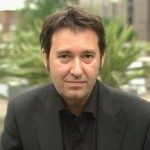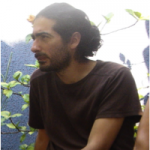About
Our group is exploring the human brain using Magnetic Resonance Imaging (MRI) and electroencephalogram (EEG). These approaches are combined with our genetic data in order to better understand the genetic and phenotypic diversity of the human brain and the factors that increase risk for psychiatric disorders. Recently, we have ascertained the genetic architecture of human brain anatomy and performed a large study on the corpus callosum in individuals with ASD.
Human brain anatomy is strikingly diverse and highly inheritable: genetic factors may explain up to 80% of its variability. Prior studies have tried to detect genetic variants with a large effect on neuroanatomical diversity, but those currently identified account for less than 5% of the variance. Based on our analyses of neuroimaging and whole-genome genotyping data from 1765 subjects of the IMAGEN project (http://www.imagen-europe.com/), we have shown that up to 54% of this heritability is captured by large numbers of single-nucleotide polymorphisms of small-effect spread throughout the genome, especially within genes and close regulatory regions. The genetic bases of neuroanatomical diversity appear to be relatively independent of those of body size (height), but shared with those of verbal intelligence scores. The study of this genomic architecture should help us better understand brain evolution and disease.
Individuals with ASD have been often reported to have a smaller corpus callosum (CC) than control. We recently conducted a meta-analysis of the literature, analyzed the CC in 694 subjects of the Autism Brain Imaging Data Exchange (ABIDE) project (http://fcon_1000.projects.nitrc.org/indi/abide/), and performed computer simulations to study the effect of different analysis strategies. Our meta-analysis suggested a group difference in CC size; however, the studies were heavily underpowered (20% power to detect Cohen’s d 5 .3). In contrast, we did not observe significant differences in the Autism Brain Imaging Data Exchange cohort, despite having achieved 99% power. The lack of statistical power in the previous literature prevents us from establishing the reality of the claims of a smaller CC in autism, and our own analyses did not find any. Overall, our results highlight the necessity for open data sharing to provide a more solid ground for the discovery of neuroimaging biomarkers within the context of the wide human neuroanatomical diversity. All data and quality check are available here: http://siphonophore.org/corpuscallosum/index.html.


